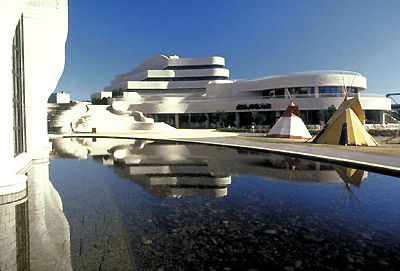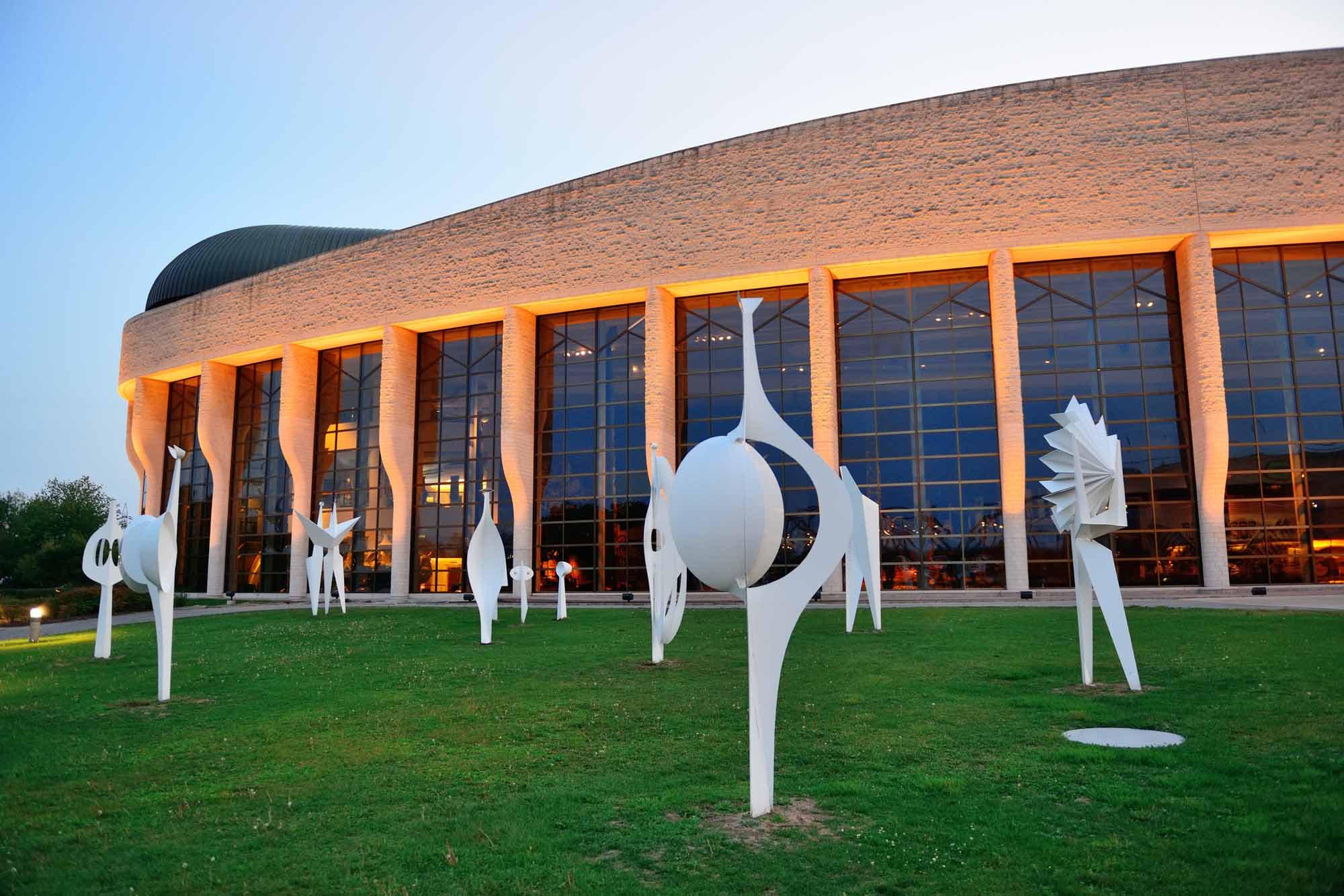Browse "History"
-
Article
Canada's History
Canada's History (until 2010, The Beaver), a magazine published by the Hudson's Bay Company, was started in 1920 as a staff magazine as part of the company's 250th anniversary celebrations.
"https://development.thecanadianencyclopedia.ca/images/tce_placeholder.jpg?v=e9dca980c9bdb3aa11e832e7ea94f5d9" // resources/views/front/categories/view.blade.php
https://development.thecanadianencyclopedia.ca/images/tce_placeholder.jpg?v=e9dca980c9bdb3aa11e832e7ea94f5d9
-
Article
Canadian Bill of Rights
The Canadian Bill of Rights was the country’s first federal law to protect human rights and fundamental freedoms. It was considered groundbreaking when it was enacted by the government of John Diefenbaker in 1960. But it proved too limited and ineffective, mainly because it applies only to federal statutes and not provincial ones. Many judges regarded it as a mere interpretive aid. The bill was cited in 35 cases between 1960 and 1982; thirty were rejected by the courts. Though it is still in effect, the Bill of Rights was superseded by the Canadian Charter of Rights and Freedoms in 1982.
"https://d2ttikhf7xbzbs.cloudfront.net/media/media/eb737d9a-742e-418d-af4d-07440f789c20.jpg" // resources/views/front/categories/view.blade.php
https://d2ttikhf7xbzbs.cloudfront.net/media/media/eb737d9a-742e-418d-af4d-07440f789c20.jpg
-
Article
Canadian Film History: 1939 to 1973
Filmmaking is a powerful form of cultural and artistic expression, as well as a highly profitable commercial enterprise. From a practical standpoint, filmmaking is a business involving large sums of money and a complex division of labour. This labour is involved, roughly speaking, in three sectors: production, distribution and exhibition. The history of the Canadian film industry has been one of sporadic achievement accomplished in isolation against great odds. Canadian cinema has existed within an environment where access to capital for production, to the marketplace for distribution and to theatres for exhibition has been extremely difficult. The Canadian film industry, particularly in English Canada, has struggled against the Hollywood entertainment monopoly for the attention of an audience that remains largely indifferent toward the domestic industry. The major distribution and exhibition outlets in Canada have been owned and controlled by foreign interests. The lack of domestic production throughout much of the industry’s history can only be understood against this economic backdrop. This article is one of four that surveys the history of the film industry in Canada. The entire series includes: Canadian Film History: 1896 to 1938; Canadian Film History: 1939 to 1973; Canadian Film History: 1974 to Present; Canadian Film History: Regional Cinema and Auteurs, 1980 to Present.
"https://d2ttikhf7xbzbs.cloudfront.net/media/media/365bfdc3-53d4-4033-b13f-5a89a83a85d5.jpg" // resources/views/front/categories/view.blade.php
https://d2ttikhf7xbzbs.cloudfront.net/media/media/365bfdc3-53d4-4033-b13f-5a89a83a85d5.jpg
-
Article
Canadian Film History: 1974 to Present
Filmmaking is a powerful form of cultural and artistic expression, as well as a highly profitable commercial enterprise. From a practical standpoint, filmmaking is a business involving large sums of money and a complex division of labour. This labour is involved, roughly speaking, in three sectors: production, distribution and exhibition. The history of the Canadian film industry has been one of sporadic achievement accomplished in isolation against great odds. Canadian cinema has existed within an environment where access to capital for production, to the marketplace for distribution and to theatres for exhibition has been extremely difficult. The Canadian film industry, particularly in English Canada, has struggled against the Hollywood entertainment monopoly for the attention of an audience that remains largely indifferent toward the domestic industry. The major distribution and exhibition outlets in Canada have been owned and controlled by foreign interests. The lack of domestic production throughout much of the industry’s history can only be understood against this economic backdrop. This article is one of four that surveys the history of the film industry in Canada. The entire series includes: Canadian Film History: 1896 to 1938; Canadian Film History: 1939 to 1973; Canadian Film History: 1974 to Present; Canadian Film History: Notable Films and Filmmakers 1980 to Present.
"https://d2ttikhf7xbzbs.cloudfront.net/media/media/4fd4ee50-6f27-491b-aeb7-2f5cd3c95f9e.jpg" // resources/views/front/categories/view.blade.php
https://d2ttikhf7xbzbs.cloudfront.net/media/media/4fd4ee50-6f27-491b-aeb7-2f5cd3c95f9e.jpg
-
Article
Canadian Film History: Notable Films and Filmmakers 1980 to Present
Filmmaking is a powerful form of cultural and artistic expression, as well as a highly profitable commercial enterprise. From a practical standpoint, filmmaking is a business involving large sums of money and a complex division of labour. This labour is involved, roughly speaking, in three sectors: production, distribution and exhibition. The history of the Canadian film industry has been one of sporadic achievement accomplished in isolation against great odds. Canadian cinema has existed within an environment where access to capital for production, to the marketplace for distribution and to theatres for exhibition has been extremely difficult. The Canadian film industry, particularly in English Canada, has struggled against the Hollywood entertainment monopoly for the attention of an audience that remains largely indifferent toward the domestic industry. The major distribution and exhibition outlets in Canada have been owned and controlled by foreign interests. The lack of domestic production throughout much of the industry’s history can only be understood against this economic backdrop. This article is one of four that surveys the history of the film industry in Canada. The entire series includes: Canadian Film History: 1896 to 1938; Canadian Film History: 1939 to 1973; Canadian Film History: 1974 to Present; Canadian Film History: Notable Films and Filmmakers 1980 to Present.
"https://d2ttikhf7xbzbs.cloudfront.net/media/media/193cc1b9-24f9-4e96-a47d-4fc2142514ae.jpg" // resources/views/front/categories/view.blade.php
https://d2ttikhf7xbzbs.cloudfront.net/media/media/193cc1b9-24f9-4e96-a47d-4fc2142514ae.jpg
-
Article
Canadian Historical Association
The Canadian Historical Association was founded in 1922 when the Historic Landmarks Association, established 1907 by the ROYAL SOCIETY, was renamed and reconstituted. The CHA is the professional association of all historians in Canada and was incorporated in 1970.
"https://development.thecanadianencyclopedia.ca/images/tce_placeholder.jpg?v=e9dca980c9bdb3aa11e832e7ea94f5d9" // resources/views/front/categories/view.blade.php
https://development.thecanadianencyclopedia.ca/images/tce_placeholder.jpg?v=e9dca980c9bdb3aa11e832e7ea94f5d9
-
Article
Canadian Historical Review
The Canadian Historical Review, founded in Toronto in 1920 and published by the University of Toronto Press, was the continuation of an earlier Toronto publication dating from 1896.
"https://development.thecanadianencyclopedia.ca/images/tce_placeholder.jpg?v=e9dca980c9bdb3aa11e832e7ea94f5d9" // resources/views/front/categories/view.blade.php
https://development.thecanadianencyclopedia.ca/images/tce_placeholder.jpg?v=e9dca980c9bdb3aa11e832e7ea94f5d9
-
Article
Canadian Identity
The question of what it means to be a Canadian has been a difficult and much debated one. Some people see the question itself as central to that identity. Canadians have never reached a consensus on a single, unified conception of the country. Most notions of Canadian identity have shifted between the ideas of unity and plurality. They have emphasized either a vision of “one” Canada or a nation of “many” Canadas. A more recent view of Canadian identity sees it as marked by a combination of both unity and plurality. The pluralist approach sees compromise as the best response to the tensions — national, regional, ethnic, religious and political — that make up Canada.
"https://d2ttikhf7xbzbs.cloudfront.net/media/media/af24ecdf-07e4-4430-bbe0-b4a913834b9d.jpg" // resources/views/front/categories/view.blade.php
https://d2ttikhf7xbzbs.cloudfront.net/media/media/af24ecdf-07e4-4430-bbe0-b4a913834b9d.jpg
-
Article
Canadian Identity and Language
Language policy in Canada, as it relates to Canadian identity, traditionally encompasses three points of view. One favours an officially bilingual Canada. It reaffirms the country as the product of two “founding peoples.” A version of this approach, introduced by Prime Minister Pierre Trudeau, endorses official bilingualism but rejects the claim that two “peoples” or “nations” deserve any special recognition. Rather, it argues that we should instead emphasize Canada’s multiculturalism. The second position argues that, since no linguistic group deserves special status, the country should therefore have no official languages. The third position argues that Canada is not only multicultural, but also multinational. It argues that French and English should have official status because this recognizes two of the country’s founding nations. This approach also suggests that efforts should be made to help preserve Indigenous languages.
"https://development.thecanadianencyclopedia.ca/images/tce_placeholder.jpg?v=e9dca980c9bdb3aa11e832e7ea94f5d9" // resources/views/front/categories/view.blade.php
https://development.thecanadianencyclopedia.ca/images/tce_placeholder.jpg?v=e9dca980c9bdb3aa11e832e7ea94f5d9
-
Article
Canadian Museum for Human Rights
In 2009, construction began in Winnipeg, Manitoba, on The Canadian Museum for Human Rights. Initially scheduled to open in 2013, opening ceremonies took place on 19 September 2014, though a number of galleries remained closed.
"https://d2ttikhf7xbzbs.cloudfront.net/media/media/cdf70c98-f09f-47c2-8680-9e3f1604f0d6.jpg" // resources/views/front/categories/view.blade.php
https://d2ttikhf7xbzbs.cloudfront.net/media/media/cdf70c98-f09f-47c2-8680-9e3f1604f0d6.jpg
-
Article
Canadian Museum of Civilization
Located in the heart of Canada's national capital region, the Canadian Museum of Civilization is the nation's leading museum of human history.
"https://d2ttikhf7xbzbs.cloudfront.net/media/media/6c68ddd7-f045-4ace-aeef-15ce3d19c64c.jpg" // resources/views/front/categories/view.blade.php
https://d2ttikhf7xbzbs.cloudfront.net/media/media/6c68ddd7-f045-4ace-aeef-15ce3d19c64c.jpg
-
Article
Music at the Canadian Museum of Civilization
Of all the national museums, only the Museum of Civilization is of prime importance to music, though the National Gallery owns paintings of musical interest, some of which are reproduced as illustrations in EMC (see also Art, visual), and the National Museum of Science and Technology owns sound reproduction equipment of historical significance.
"https://development.thecanadianencyclopedia.ca/images/tce_placeholder.jpg?v=e9dca980c9bdb3aa11e832e7ea94f5d9" // resources/views/front/categories/view.blade.php
https://development.thecanadianencyclopedia.ca/images/tce_placeholder.jpg?v=e9dca980c9bdb3aa11e832e7ea94f5d9
-
Article
Canadian Museum of Contemporary Photography
The Canadian Museum of Contemporary Photography, located in the nation's capital, is Canada's only federal institution devoted solely to the collection, exhibition and promotion of the photographic medium. As such, it is the country's foremost advocate of artistic and documentary photography.
"https://development.thecanadianencyclopedia.ca/images/tce_placeholder.jpg?v=e9dca980c9bdb3aa11e832e7ea94f5d9" // resources/views/front/categories/view.blade.php
https://development.thecanadianencyclopedia.ca/images/tce_placeholder.jpg?v=e9dca980c9bdb3aa11e832e7ea94f5d9
-
Article
Canadian Museum of History
The Canadian Museum of History (CMH) in Gatineau, QC, is the leading museum of human history in Canada and one of the country’s oldest public institutions. Previously called the Canadian Museum of Civilization, the crown corporation’s name was changed to the Canadian Museum of History, and its mandate rewritten, in 2013. Recognized for its spectacular architecture, which is designed to reflect features of the Canadian landscape, the CMH is Canada's most visited museum, with an average 1.2 million visitors each year.
"https://d2ttikhf7xbzbs.cloudfront.net/media/media/0773437a-aa96-4c83-91a9-7490cb4a4fd7.jpg" // resources/views/front/categories/view.blade.php
https://d2ttikhf7xbzbs.cloudfront.net/media/media/0773437a-aa96-4c83-91a9-7490cb4a4fd7.jpg
-
Article
Canadian Museum of Nature
The Canadian Museum of Nature (CMN), designated as a crown corporation in 1990 under the Museums Act, is the national museum of natural history.
"https://d2ttikhf7xbzbs.cloudfront.net/media/media/50032969-ff52-4994-8421-4a9f21b15cd2.jpg" // resources/views/front/categories/view.blade.php
https://d2ttikhf7xbzbs.cloudfront.net/media/media/50032969-ff52-4994-8421-4a9f21b15cd2.jpg
